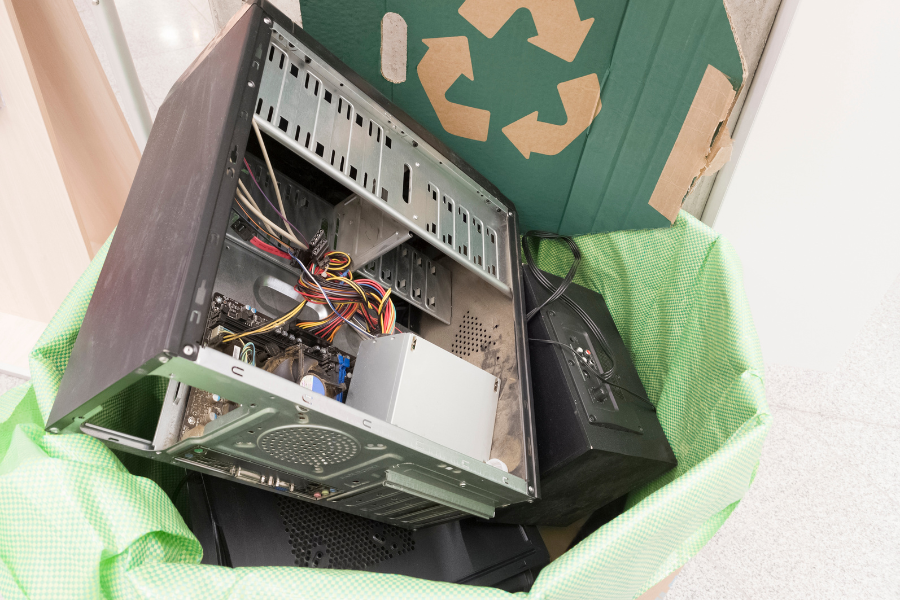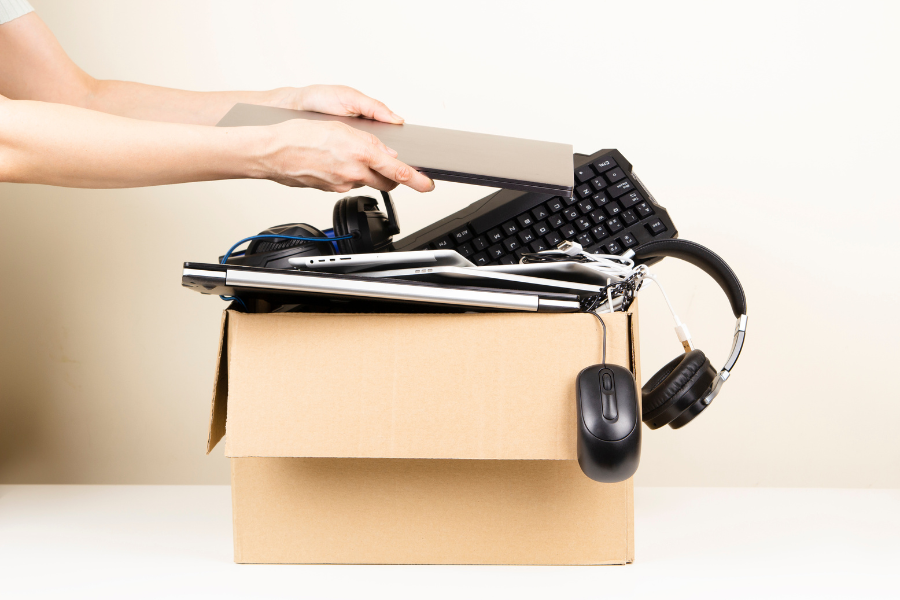HOT OFFER! Save $180 on selected internet plans + get beIN SPORTS CONNECT included!...Use promo code BEIN30 at checkout! Hurry, limited time only!
What is E-Waste and Where You Can Recycle Old Electronics
Home & Lifestyle Blog | MATE | 4 December 2023

In today’s digital age, our reliance on electronic gadgets has surged. From smartphones to laptops, fitness trackers to portable speakers, electronic devices are a massive—and even essential—part of our everyday lives.
However, this reliance on tech is giving rise to an ever-increasing volume of electronic waste, often referred to as e-waste. As Aussies, it’s incredibly important that we’re aware of this growth in e-waste and that we equip ourselves with the knowledge of where and how to recycle electronics.
The definition of electronic waste: What is e-waste?
E-waste can best be described as any electronic device or equipment that is no longer wanted or working. This could be anything from a fried laptop to a busted flatscreen TV. Or it can be a 2-year-old smartphone that is no longer wanted because it’s outclassed by the latest generation. As demand for new and better electronic devices increases along with our reliance on technology, so too does the amount of e-waste being generated year on year.
The rising tide of e-waste
Recycling electronic waste is becoming increasingly important. According to the National Waste Report 2022 report, it was estimated that 531 kilotons of e-waste was generated from 2020-21 in Australia alone. This was an increase of 2.6% from the previous year.
This new and swiftly growing waste stream presents a number of problems and challenges:
- Environmental degradation: Incorrect disposal of e-waste can lead to harmful chemicals leaking into the ground, contaminating soil and groundwater sources.
- Loss of biodiversity: Contaminated ecosystems can severely affect local flora and fauna, leading to a decrease in biodiversity.
- Hazardous materials: E-waste often contains toxic substances like lead, mercury, and cadmium. If not handled correctly, these can pose serious health risks to those coming in contact with them.
- Economic implications: The cost of handling and treating the adverse effects of e-waste can be significant for governments and communities when it is not recycled properly.
- Wasted resources: Electronics are rich in valuable materials such as gold, silver, and copper. Not recycling these precious resources means they end up going to landfill, which leads to a greater need to mine new, raw materials.
- Landfill overload: As the volume of e-waste grows, it consumes an increasing amount of landfill space, which is already at a premium in many areas of Australia.
- Carbon footprint: Manufacturing new electronics has a considerable carbon footprint. Without recycling, this footprint only increases as more devices are produced.
- Data security risks: On top of the economic and environmental impacts, there can also be risks for individuals. Incorrectly disposed electronics can become a treasure trove for data thieves if personal information isn’t securely deleted.
The valuable materials used to make your smart devices
Gold, silver, and copper are embedded in the intricate circuit boards of most electronics. That’s right—your phone, laptop and other everyday tech devices are made using precious metals. So when you recycle your devices, these materials can be extracted and reused.
Electrical cables are another form of e-waste that is made using copper and aluminium. Recycling old power cords means that both the plastic insulation and the metal inside can be recovered. Plus, copper and aluminium don’t degrade when recycled—which means they can be recycled an infinite amount of times.
If you recycle your phone, power cord, laptop or other unwanted electronics instead of throwing them in the bin, the precious materials inside are given another life. This reduces the need for extensive and invasive mining of new materials.
How e-waste is putting pressure on limited resources
Beyond these familiar metals, our gadgets also come equipped with rare elements such as palladium and tantalum. These expensive, rare materials are limited, which makes recycling e-waste even more important. While there have been successful efforts made to synthesise certain materials, it’s still important to conserve these finite natural resources instead of looking to create more.
Of course, collecting these materials isn’t merely about the economic value. It’s about conserving our planet’s limited resources and curtailing the environmental degradation mining incurs.
When you choose to recycle, you’re reclaiming valuable materials that can be reintroduced to the manufacturing cycle. This helps to foster a much more sustainable tech ecosystem.

Why is e-waste increasing so fast?
There are a few reasons behind the increase in e-waste. The blindingly fast rate that technology is overtaken by the next generation encourages us to buy more devices more often; while having your old phone repaired could work out to be the same cost as simply buying a new one.
However, the critical need to recycle electronics has given rise to numerous platforms and venues dedicated to this purpose. Australia has witnessed a surge in government initiatives aimed at addressing e-waste, guiding consumers towards responsible disposal of old tech gadgets.
Where to recycle electronics
Ok, so now you understand the importance of why you should recycle mobile phones and other electronics. But the question remains: where to recycle electronics?
Designated collection points for your electronics
The federal government has established the National Television and Computer Recycling Scheme to help people find e-waste recycling drop-off points and collection services in their local area.
Items you can recycle through this scheme include televisions, computers, computer equipment, computer parts and printers. Currently, two organisations are approved under the scheme to provide pick-up and drop-off recycling services for electronic products (TechCollect and E-Cycle Solutions).
Other ways you can recycle your electronics
The government’s scheme only covers computers, computer accessories and TVs. So what should you do with your other electronic appliances that don’t fall into these categories? With just a little bit of Googling, you should be able to find an e-waste drop-off point or collection services where you can responsibly recycle your old tech. Here are just a few suggestions:
- Local council collections: Many councils across Australia regularly organise e-waste collection days, providing a convenient method for responsible disposal. Sign up for your local council’s e-newsletter or follow them on social media to see when these events are organised.
- Dedicated e-waste facilities: Spread across major cities, these facilities are equipped to handle a wide range of electronics.
- Retailer programs: Some retailers offer e-waste recycling as part of their corporate responsibility. Local retailers in your area may offer drop-off points for e-waste such as printer cartridges, mobile phones, power tools and other devices that cannot be recycled through the government’s e-waste recycling scheme.
Achieving a greener future with responsible e-waste recycling
Approximately 54% of all e-waste is responsibly recycled in Australia. This means that a huge chunk of e-waste is still going to landfill.
Every piece of electronic waste holds potential, either as a resource or, if mishandled, as an environmental threat. Committing to responsibly recycling your e-waste is more than just an eco-friendly gesture—you’re actively decreasing your carbon footprint, preventing new resources from being mined, and contributing to a sustainable circular electronics economy. Well done to you!

